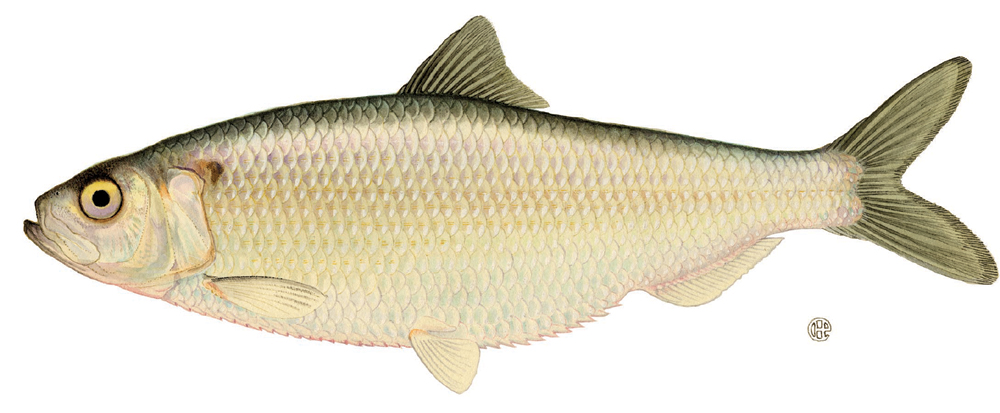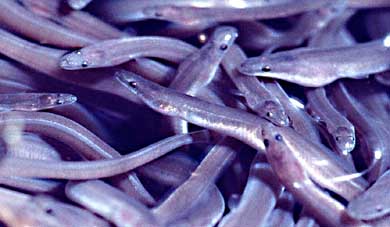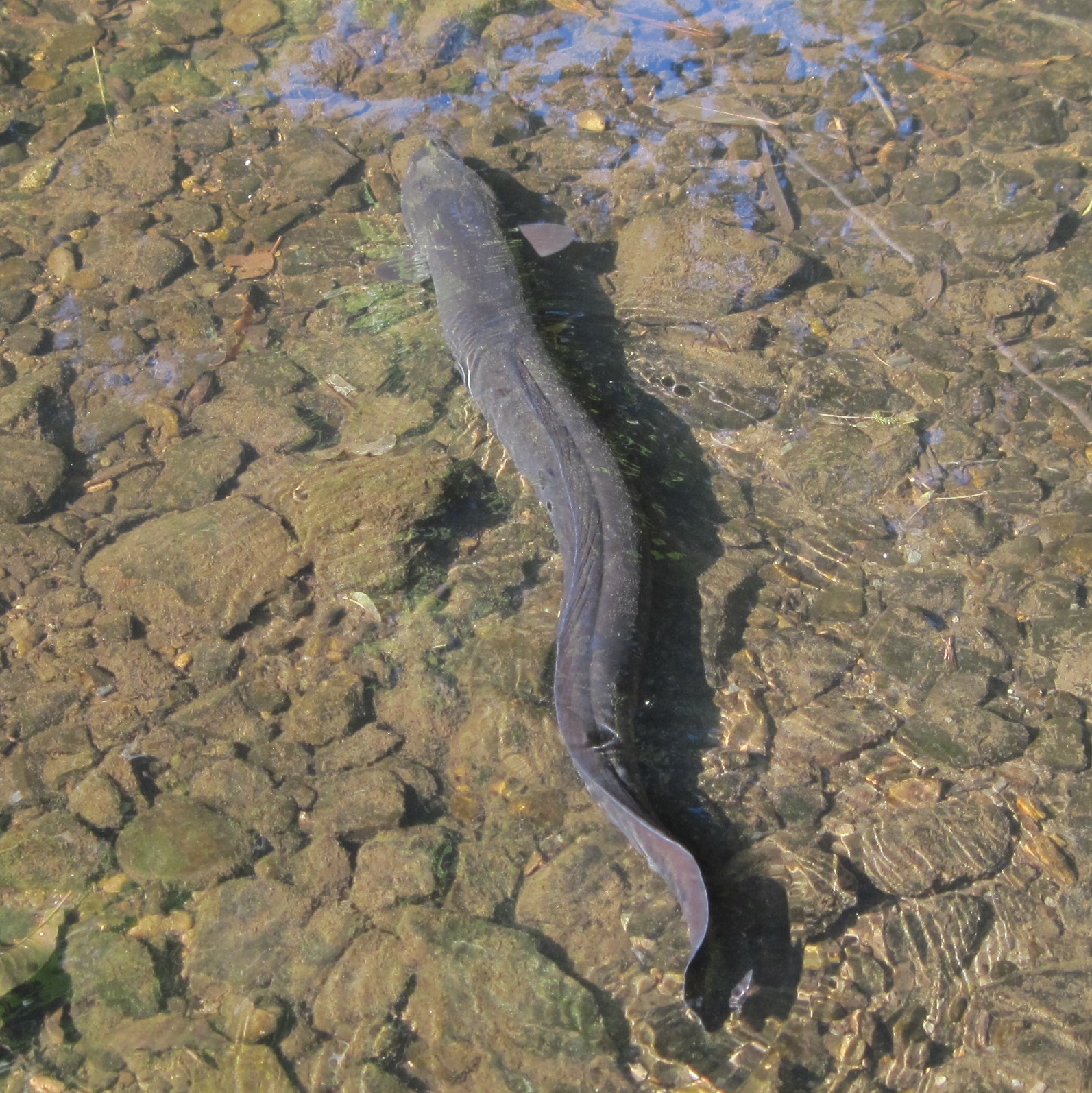|
List Of Freshwater Fishes Of Maryland
{{Short description, none This is a list of freshwater fish living wild in the US state of Maryland. Bowfin (Amiidae) * Bowfin (''Amia calva'') Catfishes (Ictaluridae) * White catfish ('' Ameiurus catus'') * Yellow bullhead (''Ameiurus natalis'') * Brown bullhead (''Ameiurus nebulosus'') * Blue catfish (''Ictalurus furcatus'') * Channel catfish (''Ictalurus punctatus'') * Stonecat (''Noturus flavus'') * Tadpole madtom ('' Noturus gyrinus'') * Margined madtom ('' Noturus insignis'') * Flathead catfish ('' Pylodictis olivaris'') Eels (Anguillidae) * American eel ('' Anguilla rostrata'') Gars (Lepisosteidae) * Longnose gar (''Lepisosteus osseus'') Herrings (Clupeidae) * Blueback herring ('' Alosa aestivalis'') * Hickory shad ('' Alosa mediocris'') * Alewife ('' Alosa pseudoharengus'') * American shad ('' Alosa sapidissima'') * Gizzard shad (''Dorosoma cepedianum'') * Threadfin shad (''Dorosoma petenense'') Killifishes (Fundulidae) * Banded killifish ('' Fundulus di ... [...More Info...] [...Related Items...] OR: [Wikipedia] [Google] [Baidu] |
Freshwater Fish
Freshwater fish are those that spend some or all of their lives in fresh water, such as rivers and lakes, with a salinity of less than 1.05%. These environments differ from marine conditions in many ways, especially the difference in levels of salinity. To survive fresh water, the fish need a range of physiology, physiological adaptations. 41.24% of all known species of fish are found in fresh water. This is primarily due to the rapid speciation that the scattered habitats make possible. When dealing with ponds and lakes, one might use the same basic models of speciation as when studying island biogeography. Physiology Freshwater fish differ physiologically from salt water fish in several respects. Their gills must be able to diffuse dissolved gases while keeping the salts in the body fluids inside. Their scales reduce water diffusion through the skin: freshwater fish that have lost too many scales will die. They also have well developed kidneys to reclaim salts from body flui ... [...More Info...] [...Related Items...] OR: [Wikipedia] [Google] [Baidu] |
Tadpole Madtom
The tadpole madtom (''Noturus gyrinus'') is a species of fish in the family Ictaluridae. It is native to Canada and the United States. Description An adult tadpole madtom is typically , however they have recorded at a length of . The tadpole madtom has a dark brown back with a lighter brown color on their sides and a yellow or white stomach. The pelvic and pectoral fins of adults are heavily covered in melanophores responsible for pigmentation, and the dorsal and anal fins contain fewer melanophores. There are also bands of melanophores on both the upper and lower jaws creating a dark horizontal streak along the side. Chin barbels vary from white to being lightly covered with melanophores. The tadpole madtom possess dark nasal and maxillary barbels and white mandibular barbels. Their adipose fin is completely connected to their large and round caudal fin, and their pectoral fin is not serrated. They possess 6–7 gill rakers; 6–7 dorsal rays; 15–18 anal rays; 7–9 pectoral ... [...More Info...] [...Related Items...] OR: [Wikipedia] [Google] [Baidu] |
Blueback Herring
The blueback herring, blueback shad, or summer shad (''Alosa aestivalis'') is an anadromous species of herring from the east coast of North America, with a range from Nova Scotia to Florida. Blueback herring form schools and are believed to migrate offshore to overwinter near the bottom. These fish are silvery in color, have a series of scutes (modified, spiny and keeled scales) along their bellies, and are characterized by deep bluish-green backs. They reach a maximum size of approximately and are believed to live up to 8 years. The most distinguishing characteristic of this species is the black to dusky color of its peritoneum (the lining of the abdominal cavity). It is one of the "typical" North American shads. They are often confused with alewifes because blueback shad and alewives are difficult to distinguish from one another, and together these two species are often regarded collectively as "river herring". Alewives have larger eyes, greater body depth, and pearly t ... [...More Info...] [...Related Items...] OR: [Wikipedia] [Google] [Baidu] |
Clupeidae
Clupeidae is a family of ray-finned fishes, comprising, for instance, the herrings, shads, sardines, hilsa, and menhadens. The clupeoids include many of the most important food fishes in the world, and are also commonly caught for production of fish oil and fish meal. Many members of the family have a body protected with shiny cycloid (very smooth and uniform) scales, a single dorsal fin, and a fusiform body for quick, evasive swimming and pursuit of prey composed of small planktonic animals. Due to their small size and position in the lower trophic level of many marine food webs, the levels of methylmercury they bioaccumulate are very low, reducing the risk of mercury poisoning when consumed. Description and biology Clupeids are mostly marine forage fish, although a few species are found in fresh water. No species has scales on the head, and some are entirely scaleless. The lateral line is short or absent, and the teeth are unusually small where they are present at all. Clupe ... [...More Info...] [...Related Items...] OR: [Wikipedia] [Google] [Baidu] |
Lepisosteus Osseus
The longnose gar (''Lepisosteus osseus''), also known as longnose garpike or billy gar, is a ray-finned fish in the family Lepisosteidae. The genus may have been present in North America for about 100 million years. References are made to gars being a primitive group of bony fish because they have retained some primitive features, such as a spiral valve intestine, but they are not primitive in the sense of not being fully developed. They have an olive brown to green, torpedo-shaped body armored with ganoid scales, elongated jaws that form a needle-like snout nearly three times the length of its head, and a row of numerous sharp, cone-shaped teeth on each side of the upper jaw. They typically inhabit freshwater lakes, brackish water near coastal areas, swamps, and sluggish backwaters of rivers and streams. They can breathe both air and water, which allows them to inhabit aquatic environments that are low in oxygen. Longnose gar are found along the east coasts of North and Cen ... [...More Info...] [...Related Items...] OR: [Wikipedia] [Google] [Baidu] |
Longnose Gar
The longnose gar (''Lepisosteus osseus''), also known as longnose garpike or billy gar, is a ray-finned fish in the family Lepisosteidae. The genus may have been present in North America for about 100 million years. References are made to gars being a primitive group of bony fish because they have retained some primitive features, such as a spiral valve intestine, but they are not primitive in the sense of not being fully developed. They have an olive brown to green, torpedo-shaped body armored with ganoid scales, elongated jaws that form a needle-like snout nearly three times the length of its head, and a row of numerous sharp, cone-shaped teeth on each side of the upper jaw. They typically inhabit freshwater lakes, brackish water near coastal areas, swamps, and sluggish backwaters of rivers and streams. They can breathe both air and water, which allows them to inhabit aquatic environments that are low in oxygen. Longnose gar are found along the east coasts of North and Cen ... [...More Info...] [...Related Items...] OR: [Wikipedia] [Google] [Baidu] |
Lepisosteidae
Gars are members of the family Lepisosteidae, which are the only surviving members of the Ginglymodi, an ancient holosteian group of ray-finned fish, which first appeared during the Triassic, over 240 million years ago. Gars comprise seven living species of fish in two genera that inhabit fresh, brackish, and occasionally marine waters of eastern North America, Central America and Cuba in the Caribbean, though extinct members of the family were more widespread. Gars have elongated bodies that are heavily armored with ganoid scales, and fronted by similarly elongated jaws filled with long, sharp teeth. Gars are sometimes referred to as "garpike", but are not closely related to pike, which are in the fish family Esocidae. All of the gars are relatively large fish, but the alligator gar (''Atractosteus spatula'') is the largest; the alligator gar often grows to a length over and a weight over , and specimens of up to in length have been reported. Unusually, their vascularised sw ... [...More Info...] [...Related Items...] OR: [Wikipedia] [Google] [Baidu] |
Anguilla Rostrata
The American eel (''Anguilla rostrata'') is a facultative catadromous fish found on the eastern coast of North America. Freshwater eels are fish belonging to the elopomorph superorder, a group of phylogenetically ancient teleosts. The American eel has a slender, snake-like body that is covered with a mucus layer, which makes the eel appear to be naked and slimy despite the presence of minute scales. A long dorsal fin runs from the middle of the back and is continuous with a similar ventral fin. Pelvic fins are absent, and relatively small pectoral fins can be found near the midline, followed by the head and gill covers. Variations exist in coloration, from olive green, brown shading to greenish-yellow and light gray or white on the belly. Eels from clear water are often lighter than those from dark, tannic acid streams. The eel lives in fresh water and estuaries and only leaves these habitats to enter the Atlantic Ocean to make its spawning migration to the Sargasso Sea. Spawnin ... [...More Info...] [...Related Items...] OR: [Wikipedia] [Google] [Baidu] |
American Eel
The American eel (''Anguilla rostrata'') is a facultative catadromous fish found on the eastern coast of North America. Freshwater eels are fish belonging to the elopomorph superorder, a group of phylogenetically ancient teleosts. The American eel has a slender, snake-like body that is covered with a mucus layer, which makes the eel appear to be naked and slimy despite the presence of minute scales. A long dorsal fin runs from the middle of the back and is continuous with a similar ventral fin. Pelvic fins are absent, and relatively small pectoral fins can be found near the midline, followed by the head and gill covers. Variations exist in coloration, from olive green, brown shading to greenish-yellow and light gray or white on the belly. Eels from clear water are often lighter than those from dark, tannic acid streams. The eel lives in fresh water and estuaries and only leaves these habitats to enter the Atlantic Ocean to make its spawning migration to the Sargasso Sea. Spa ... [...More Info...] [...Related Items...] OR: [Wikipedia] [Google] [Baidu] |
Anguillidae
The Anguillidae are a family of ray-finned fish that contains the freshwater eels. Eighteen of the 19 extant species and six subspecies in this family are in the genus ''Anguilla''. They are elongated fish with snake-like bodies, their long dorsal, caudal and anal fins forming a continuous fringe. They are catadromous fish, spending their adult lives in freshwater, but migrating to the ocean to spawn. Eels are an important food fish and some species are now farm-raised, but not bred in captivity. Many populations in the wild are now threatened, and Seafood Watch recommend consumers avoid eating anguillid eels. Physical description Adult freshwater eels are elongated with tubelike, snake-shaped bodies. They have large, pointed heads and their dorsal fins are usually continuous with their caudal and anal fins, to form a fringe lining the posterior end of their bodies. They have relatively well developed eyes and pectoral fins compared to saltwater eels that they use to navigate ... [...More Info...] [...Related Items...] OR: [Wikipedia] [Google] [Baidu] |
Pylodictis Olivaris
The flathead catfish (''Pylodictis olivaris''), also called by several common names including mudcat or shovelhead cat, is a large species of North American freshwater catfish in the family Ictaluridae. It is the only species of the genus ''Pylodictis''. Ranging from the lower Great Lakes region to northern Mexico, it has been widely introduced and is an invasive species in some areas. The closest living relative of the flathead catfish is the much smaller widemouth blindcat, ''Satan eurystomus''. Common names The flathead catfish is also known as the yellow cat, mud cat, Johnnie cat, ''goujon'', ''appaluchion'', ''opelousas'', pied cat and Mississippi cat. In dialect of the Ozark mountains it may be referred to as a "granny cat." Description The flathead catfish is olive colored on its sides and dorsum, with a white to yellow underside. Individuals, particularly young specimens from clearer waters, may be strongly mottled with dark brown to black color. The eyes are small ... [...More Info...] [...Related Items...] OR: [Wikipedia] [Google] [Baidu] |
Flathead Catfish
The flathead catfish (''Pylodictis olivaris''), also called by several common names including mudcat or shovelhead cat, is a large species of North American freshwater catfish in the family Ictaluridae. It is the only species of the genus ''Pylodictis''. Ranging from the lower Great Lakes region to northern Mexico, it has been widely introduced and is an invasive species in some areas. The closest living relative of the flathead catfish is the much smaller widemouth blindcat, ''Satan eurystomus''. Common names The flathead catfish is also known as the yellow cat, mud cat, Johnnie cat, ''goujon'', ''appaluchion'', ''opelousas'', pied cat and Mississippi cat. In dialect of the Ozark mountains it may be referred to as a "granny cat." Description The flathead catfish is olive colored on its sides and dorsum, with a white to yellow underside. Individuals, particularly young specimens from clearer waters, may be strongly mottled with dark brown to black color. The eyes are smal ... [...More Info...] [...Related Items...] OR: [Wikipedia] [Google] [Baidu] |





